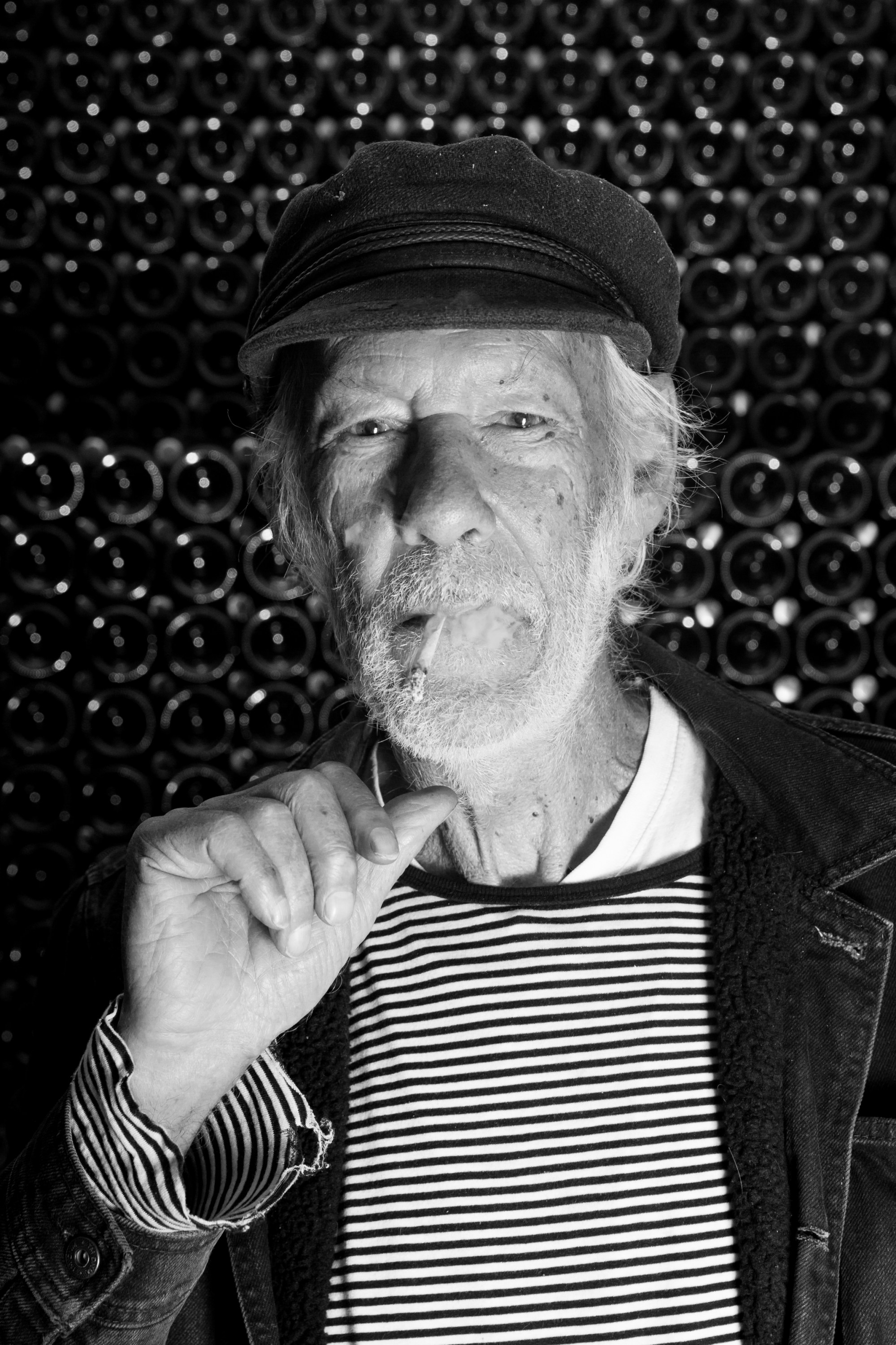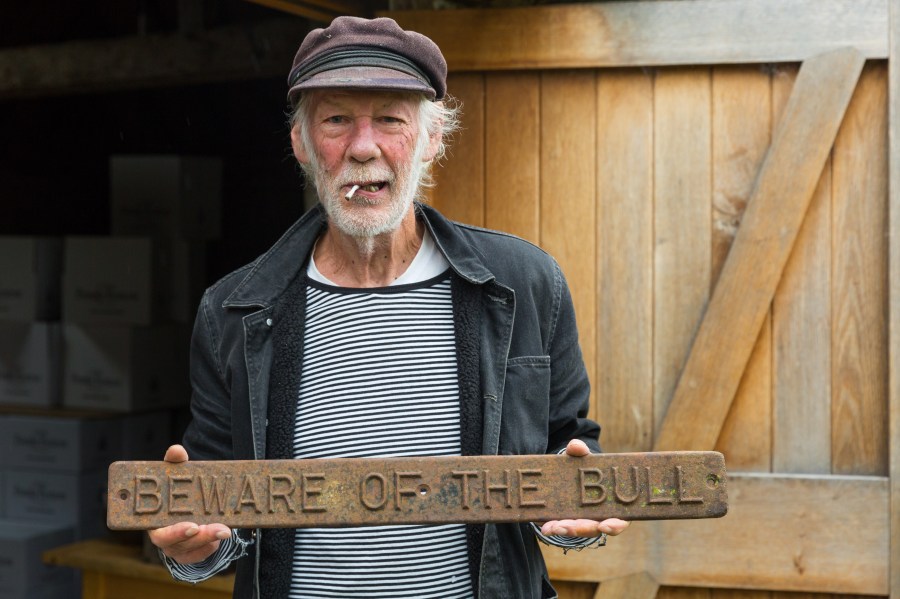Peter Hall was a pioneer of the English wine world with a career spanning half a century. He was inspirational to many individuals across the wine industry.
Peter Hall shared his passion for not just wine but life with several generations of winemakers, buyers and writers but he also managed that rare thing… to inspire those who had not even met him and reflective of his personality his wines were all named after those people that mattered to him.
Here Peter is remembered by his family:
When considering ‘The Peter Factor’, one should first understand that it was not beyond him to flick his cigarette ash into anything. Soup cooking on the stove, the turn-ups of his jeans, or wine in a tank! He enjoyed being irreverent – and loved smoking Old-Holborn roll-ups.
Above all, Peter was an artist. This could have manifested itself in any number of ways, as a writer, musician, actor or poet. Instead, fuelled by the pragmatic need to earn a living, he decided (perhaps surprisingly) to study agriculture at Newcastle University. Surprising — because his teenage years had been spent in London’s Notting Hill. Agriculture was a romantic calling, nurtured by childhood experiences at his family home, Rangeworthy Court in Gloucestershire.
Peter’s parents were all-important. Jeannine, his mother (or Maman) was a beautiful, staunchly French matriarch from head to toe, and an exceptional woman. In classic continental fashion, food was everything. Food was prepared and eaten, and whilst preparing and eating, was discussed, and the next meal was planned. Jeannine was not only an exceptional cook, but had a critical eye for clothes, furniture, art and style in general. She was a highly creative potter, artist and interior designer. Although English, John Inglis Hall was a linguist and Francophile, and on meeting Jeannine he slipped seamlessly into this French utopia. John’s lifelong passion was fly fishing, a love passed on to Peter and Patrick, as well as his grandchildren.
Wine flowed. Not in excess, but in appreciation. The children were schooled on wine evaluation by Jeannine’s father, a renowned restaurateur with restaurants in Paris and London. The question asked by all of Peter’s family elders as he developed was “ …but what do you really think?” – of this wine, this opera, this sculpture, this painting. The question created a radical free thinker, not constrained by any single belief system, but with enormous trust in his own instincts and intuition.
Perhaps the final ingredient needed was to be a gambler or risk taker. His family had both built and lost fortunes, and this helped free him to live with a level of risk that others might find intolerable, but that anyone contemplating planting an English vineyard in the 1970s needed to learn to embrace. Especially if determined to produce dry French-style wines of true quality – the secret of which Peter insisted, up to his dying day, was to start picking at least ten days after every other vineyard in the country had completed its harvest! High risk, but high reward in terms of quality of juice when the risk paid off.
From the outset Peter had a singular vision for what might be possible on this unique piece of land. Land sitting on the same Cretaceous chalk formations as the Champagne hills. When his very few, early contemporaries were pursuing a Germanic style of wine, Peter had other ideas. His lineage and upbringing gave him the strength and focus to reject the status quo, and to be the pioneer of Seyval Blanc in the UK from 1974 to this day. His palate and his instinct told him it would work.
Armed with an inherent love of nature, a Catholic upbringing that gave space for the mysteries of life, and a paperback book on wine making, he made a start.
Peter seized on the idea of terroir – and took it a stage further. In planting trees and a bank of 1,000 daffodils with his children to nurture the environment in which the vines grew, he understood that every facet of place would influence plants, culture and endeavour, and thus be evident in the resulting wines. He celebrated the annual cycle of the farm through solo winter pruning, tying down at dawn or dusk, and the much-loved labour of spring lambing. His children grew up safe in the assurance that he was always close at hand in the vineyard, a transistor radio hanging from a macramé string cord around his neck, content and deeply connected to his work. They’d find him there, happy to be interrupted … but even happier not to be.
Peter’s love and understanding of animals, livestock and animal husbandry was simply an extension of his character. Calm; cool; collected. Nature reciprocated in kind. Lambs revived by persistent pinching to stimulate the nerves of the apparently lifeless. Patient; knowing; loving. And the shift from still to sparkling wine was another chance for him to reinvent, to evolve. It was a commercial advantage – but also a spiritual necessity. Champagne’s traditional method was the perfect fit for his painstaking and perfectionist approach, as well as an ideal evolution for Breaky Bottom’s propitious terroir. It represents the pinnacle of what these chalky soils could offer, and what ‘the Peter factor’ could give to the wine world.





